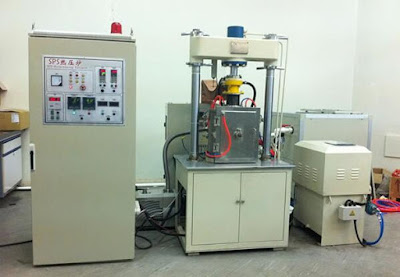High-temperature Vacuum Sintering Furnaces
Vacuum sintering, refers to the process that making the powder material into dense material in the condition of the vacuum.People use this process to produce ceramics, powder metallurgy, refractories, ultra-high temperature materials.
In general, after forming the powder and by the sintering process, it becomes the density mateiral.The sintering process directly affects the grain size, pore size and grain boundary shape and distribution in the microstructure, thus affecting the properties of the material.
These furnaces are equipped with electrical resistance heating or with inductive heating. They can be used for numerous purposes because they apply vacuum as well as inert atmospheres. This main application is debinding and subsequent sintering of ceramics or powder metallurgical parts.
They are also used for different high - temperature processes such as carburisation, recrystallisation, silicon infiltration, nitridation (formation of Si3N4), vacuum sintering or metallisation.
Available volume: 1 dm³ to 10 m³ at max. temperatures of 2800 °C.
Examples for materials that can be processed in FCT furnaces are:
- Composite materials, MMC and CMC material
- Reaction bonded silicon nitride and nitride bonded silicon carbide used in various high temperature applications such as welding nozzles and fixtures, components for aluminium founderies, kiln furniture etc.
- Sintered silicon nitride and sialon (parts for mechanical applications at high temperatures, e.g. wear parts, motor components etc.)
- Reaction bonded silicon carbide SiSiC (e.g. axial face seals, composite materials, kiln furniture etc.)
- Pressureless sintered silicon carbide (parts for high performance applications at high temperatures or in severe environments).
- Hard metals (WC, TaC, TiC, NbC) with a metallic “binder” such as Co or Ni.
- Refractory metals: metals with very high melting points, like W, Mo, Ta, Nb etc.
- Advanced kiln furniture based on SSiC, RSiC, SiSiC, NSiC and composite materials.
- Rare-earth-metal-alloys e.g. samarium-cobalt or neodym-boron-iron, as high performance permanent magnets
Other high performance materials which are used at very high temperatures and very high pressures.
